Jubrique ♥ Cabinet
The love affair continues
Jonathan Allen
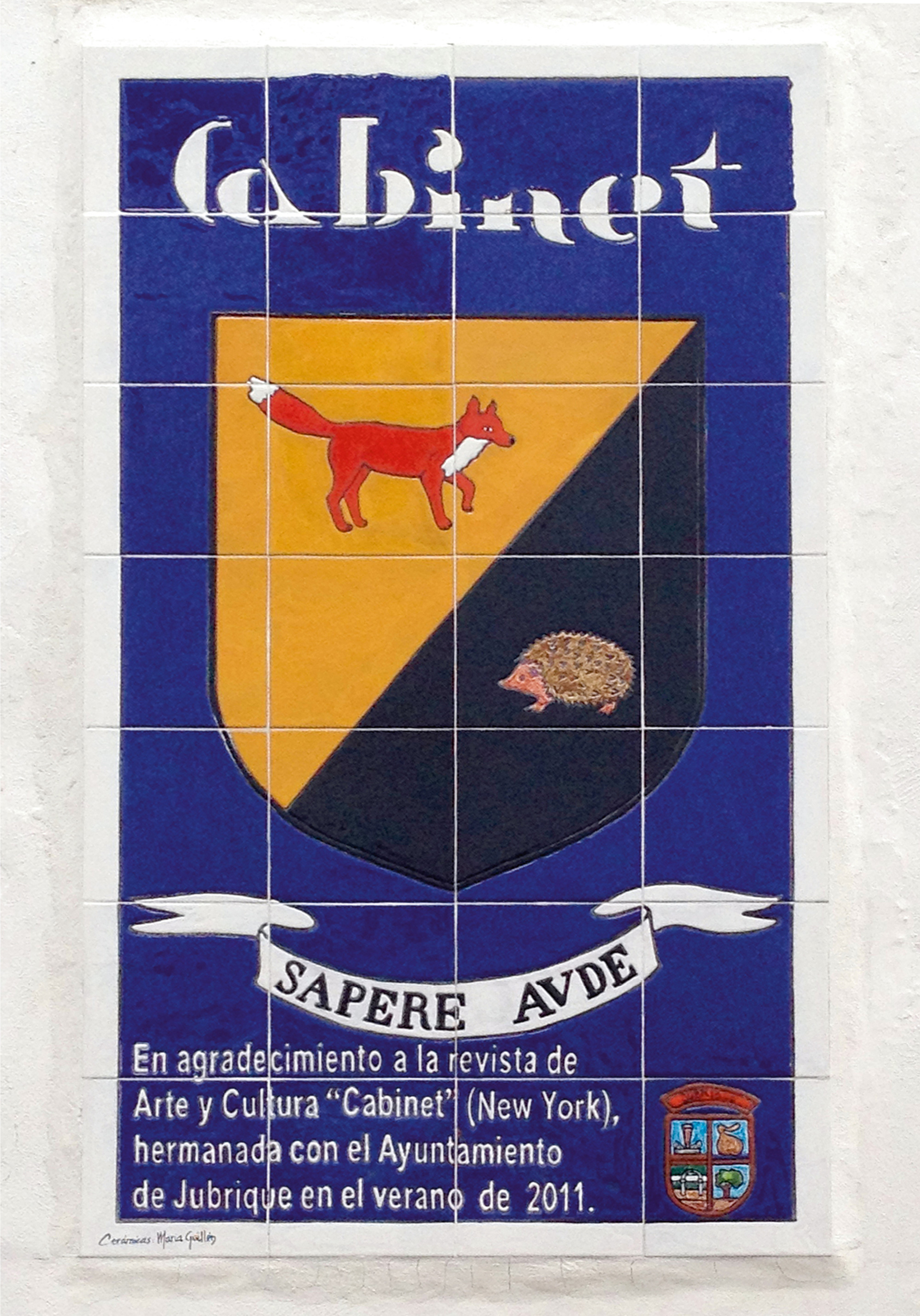
In July 2011, during a visit to the Serranía de Ronda in the Malaga region of southern Spain, I had the good fortune to be conveyed by friends to the mountainside village of Júzcar. Each dwelling in this quiet Andalusian pueblo blanco had been recently re-painted “Smurf blue” as part of a colossal publicity stunt to promote a forthcoming Hollywood movie. Although Júzcar’s new affiliation led to the article “Pitufo Blues,” published in Cabinet no. 44, my writing desk was not to be found within this chromatically transformed locale. Rather, it was located in the nearby village of Jubrique.
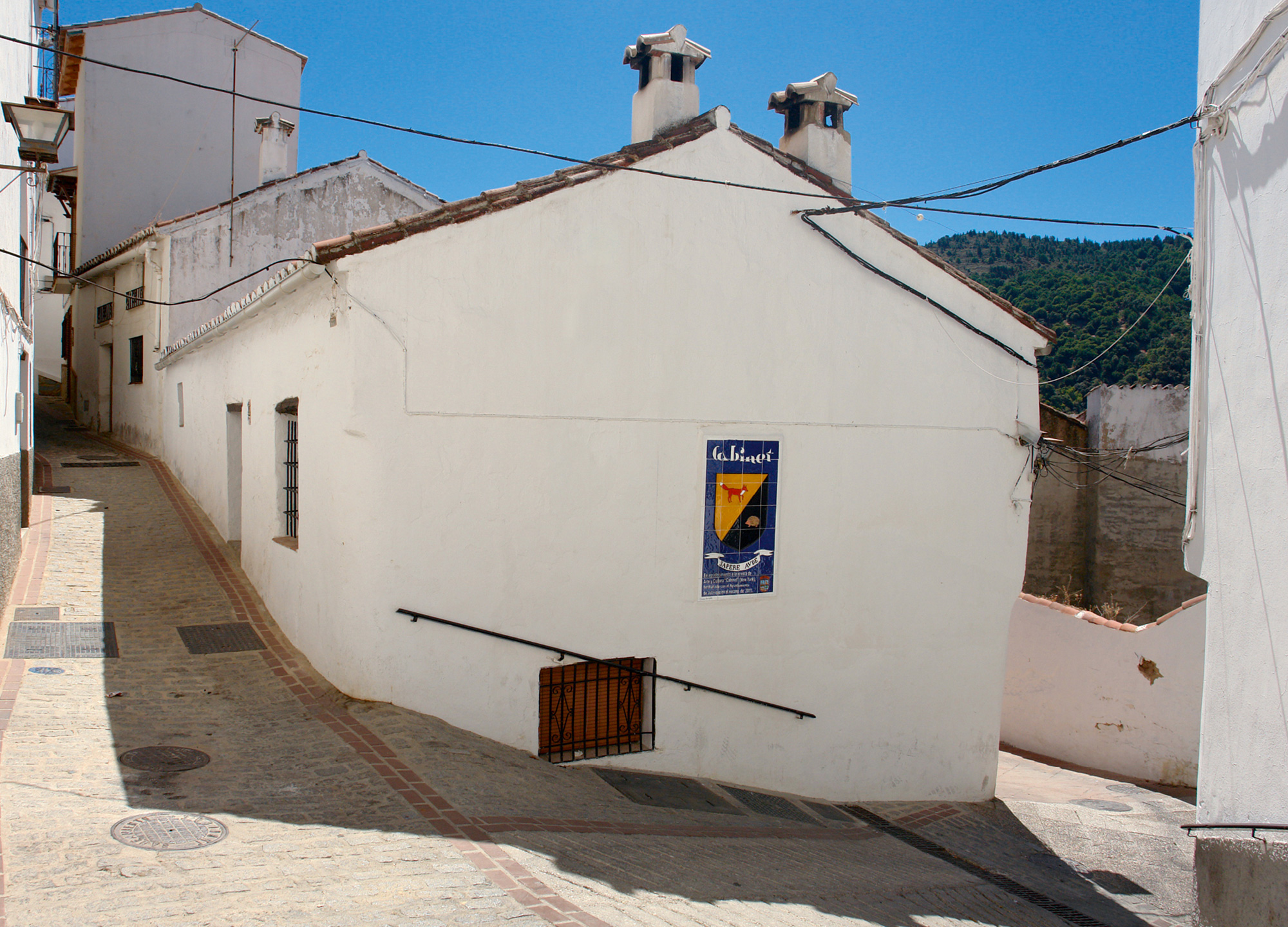
Like the inhabitants of Júzcar, which benefited greatly from increased tourism following its makeover, Jubriqueños have been weathering Spain’s economic downturn pragmatically, drawing perhaps on the same guile that shaped resistance within the region during both its Napoleonic occupation and its Francoist era. When I met with Jubrique’s recently appointed socialist mayor, David Sanchez, and suggested a few ideas through which Cabinet and the village too might embark upon some form of alliance, his choice of engagement was an exemplar of paradiplomatic chivalry: the exchange of heraldic shields.
As regular readers of Cabinet may know, the magazine’s coat of arms refers to the fox and hedgehog of Isaiah Berlin’s celebrated essay on Tolstoy, in which the former reflects on the intellectual habits and literary output of various philosophers: foxes know a little about lots of things (they are generalists, such as Aristotle, Shakespeare, and Joyce) while hedgehogs know a lot about one thing (they are specialists, such as Plato, Hegel, and Proust). The motifs that comprise Jubrique’s shield draw together agrarian and classical iconography by juxtaposing the region’s agricultural produce—olive oil, aguardiente (an alcoholic drink that translates as “firewater”), and chestnuts—with the formidable Pillars of Hercules, the rocky peninsulas at the mouth of the Mediterranean Sea believed by cartographers of antiquity to denote the edge of the world.
Following a period of mutual blazoning in Brooklyn and Andalusia, respective shields were hoisted and carried aloft on an assigned day through the streets of New York and Jubrique (also see Cabinet no. 44). The fox depicted on Cabinet’s shield provoked particular interest from Jubriqueños due to a fabled encounter between the village’s patron saint, Francis of Assisi, and another member of the Canidae family. According to the Fioretti di San Francesco, Saint Francis tamed the hostile “wolf of Gubbio” using his well-known conversational skills. It is not clear if the saint ever encountered a hedgehog.
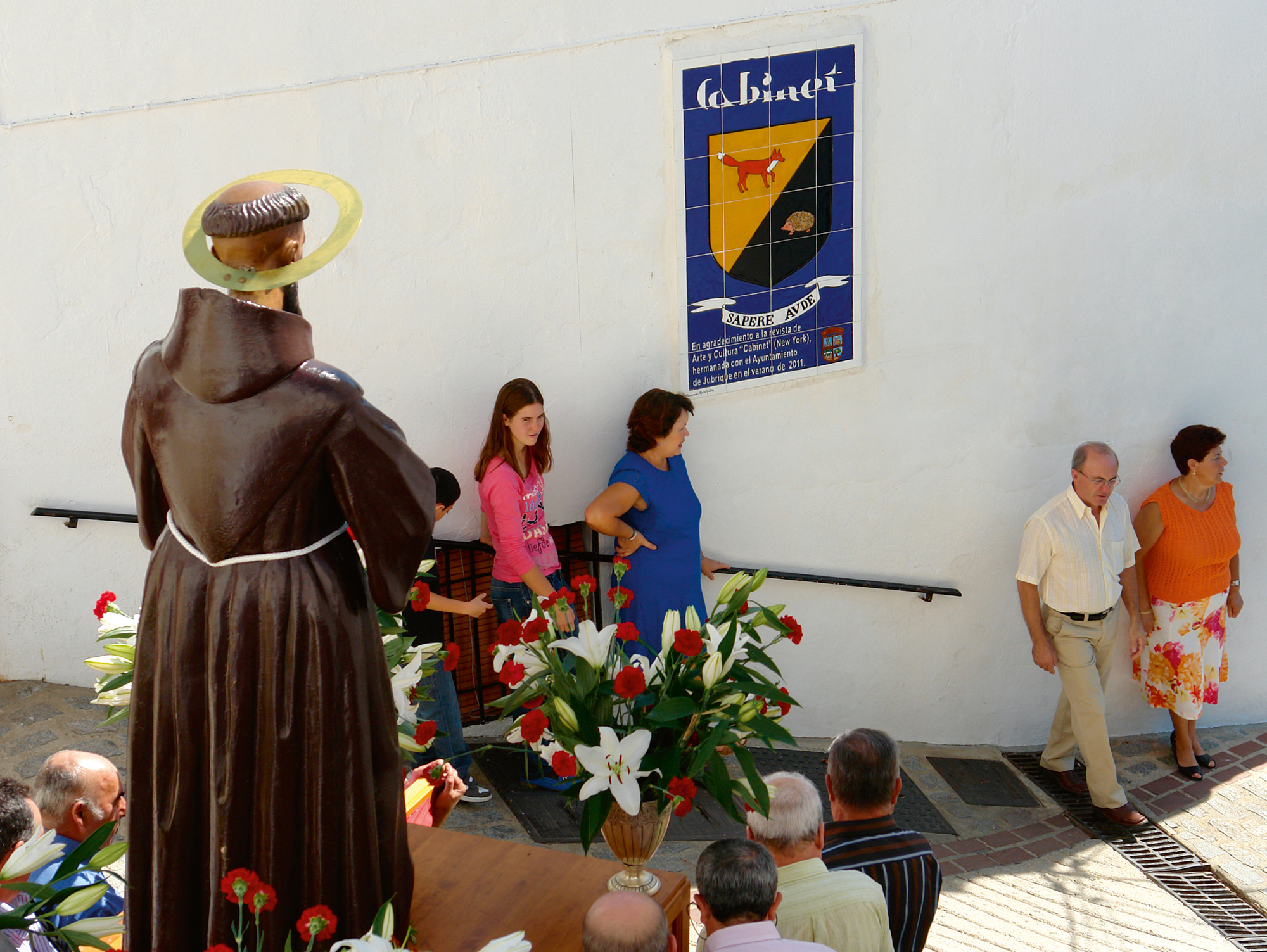
Like the carefree expressions of affection betwixt new lovers, gift exchanges can turn out to be little more than fragile markers of fugitive desire. And so I was moved to learn earlier this year of David’s intention to commemorate the events of the summer of 2011 with a permanent ceramic plaque in the center of Jubrique. During a period of deepening economic austerity, this expression of ongoing solidarity is especially poignant, and was made possible also through the generosity of the matriarch of the Sanchez family, whose house provided a suitable wall location adjacent to a square flanked on one side by a natural spring and on the other by one of the village’s finest drinking establishments, La Parra.
The ceramic tiles shown on these pages were created by Maria Guillén and expertly installed by José Ruiz Ruiz and Juan José Ruiz Huertas. The editors of Cabinet join me in my heartfelt thanks to David Sanchez and his family for this sustained gesture of international affiliation.
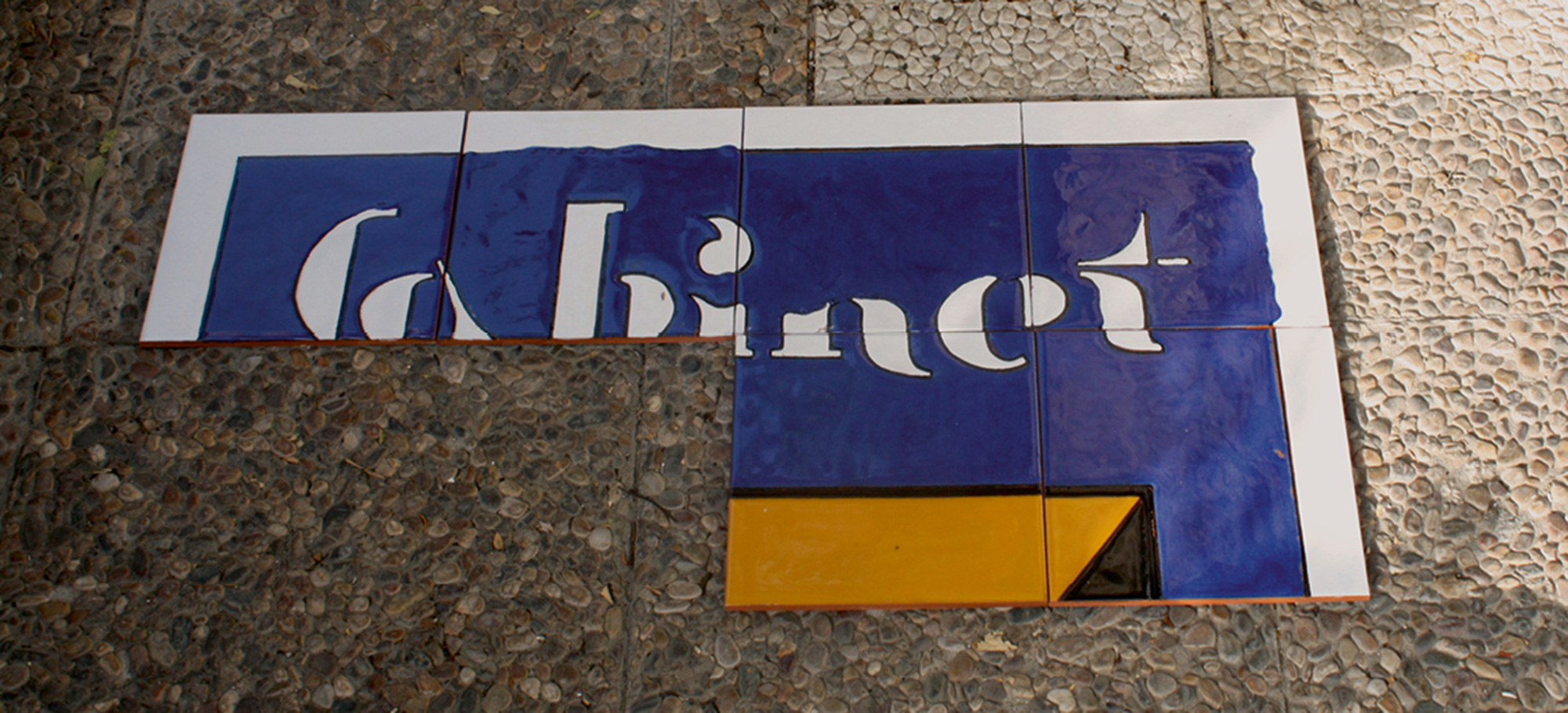
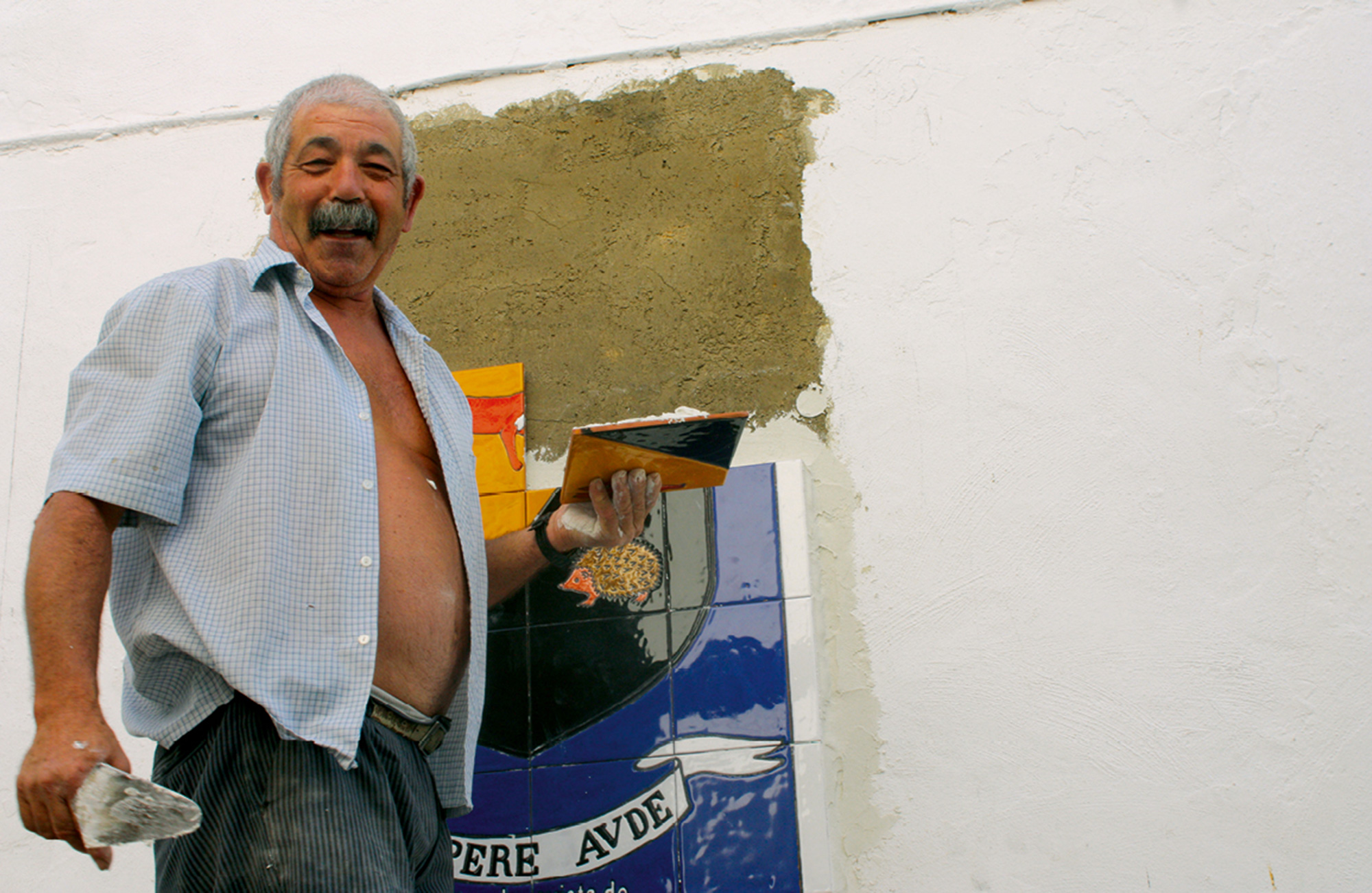
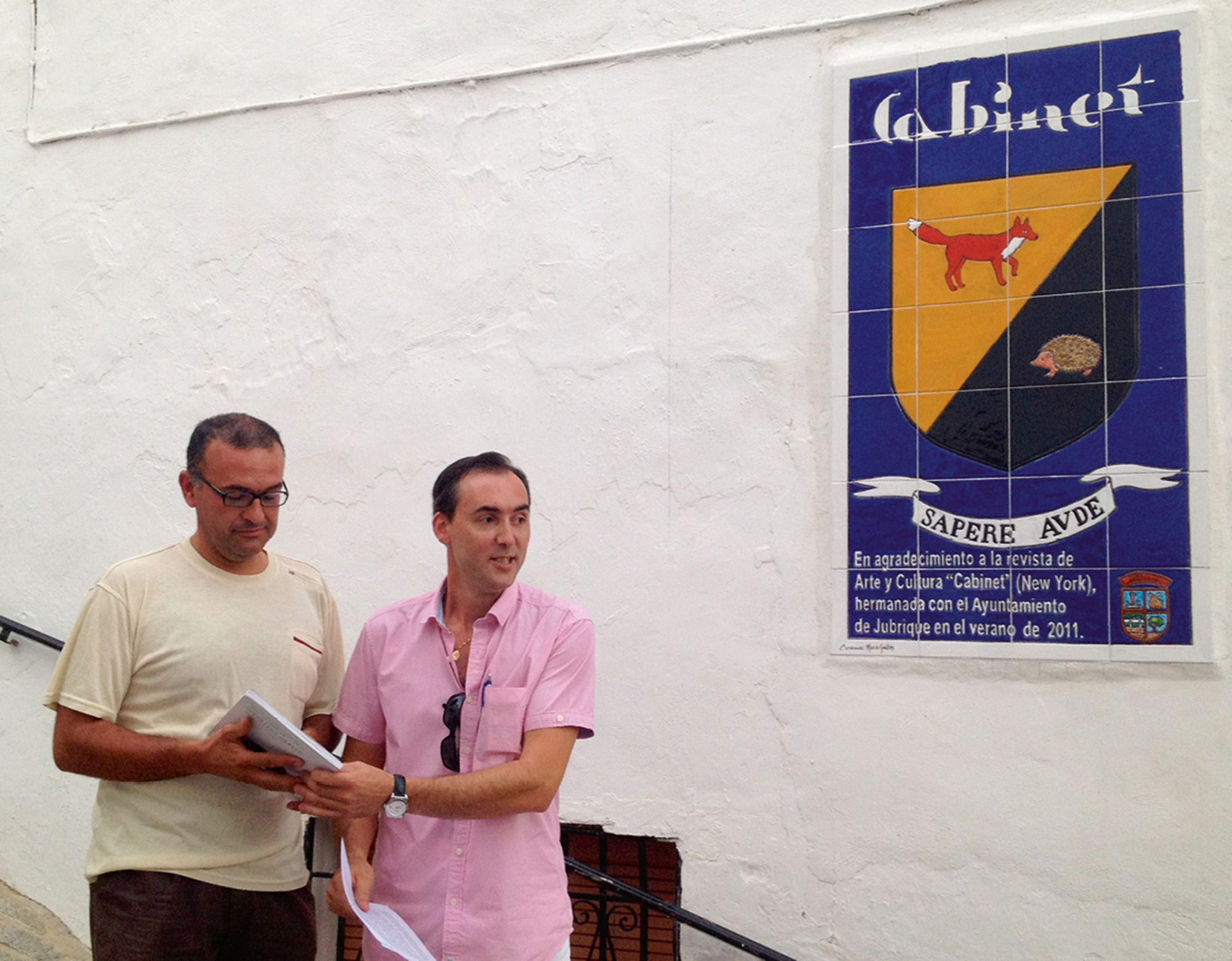
Jonathan Allen is a visual artist and writer, and currently a researcher in the Hall of Records at the Centre for Useless Splendour, Kingston University, London. For more information, see jonathanallen.info.
Spotted an error? Email us at corrections at cabinetmagazine dot org.
If you’ve enjoyed the free articles that we offer on our site, please consider subscribing to our nonprofit magazine. You get twelve online issues and unlimited access to all our archives.